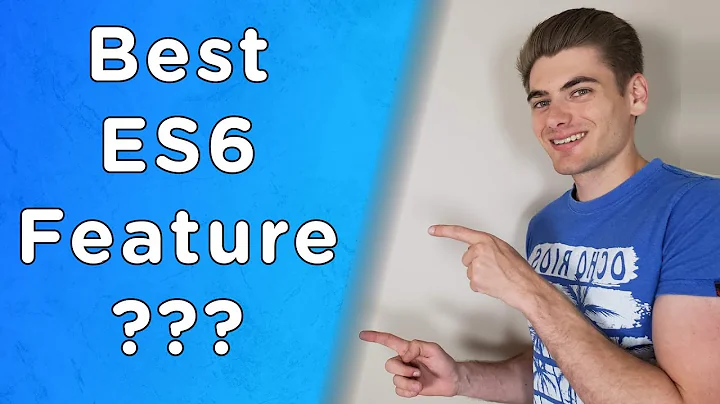JSDoc: Return object structure
102,287
Solution 1
Define your structure separately using a @typdef:
/**
* @typedef {Object} Point
* @property {number} x - The X Coordinate
* @property {number} y - The Y Coordinate
*/
And use it as the return type:
/**
* Returns a coordinate from a given mouse or touch event
* @param {TouchEvent|MouseEvent|jQuery.Event} e
* A valid mouse or touch event or a jQuery event wrapping such an
* event.
* @param {string} [type="page"]
* A string representing the type of location that should be
* returned. Can be either "page", "client" or "screen".
* @return {Point}
* The location of the event
*/
var getEventLocation = function(e, type) {
...
return {x: xLocation, y: yLocation};
}
Solution 2
An alternative to the suggestions already posted, you can use this format:
/**
* Get the connection state.
*
* @returns {Object} connection The connection state.
* @returns {boolean} connection.isConnected Whether the authenticated user is currently connected.
* @returns {boolean} connection.isPending Whether the authenticated user's connection is currently pending.
* @returns {Object} connection.error The error object if an error occurred.
* @returns {string} connection.error.message The error message.
* @returns {string} connection.error.stack The stack trace of the error.
*/
getConnection () {
return {
isConnected: true,
isPending: false,
error
}
}
which will give the following documentation output:
Get the connection state.
getConnection(): Object
Returns
Object: connection The connection state.
boolean: connection.isConnected Whether the authenticated user is currently connected.
boolean: connection.isPending Whether the authenticated users connection is currently pending.
Object: connection.error The error object if an error occurred.
string: connection.error.message The error message.
string: connection.error.stack The stack trace of the error.
Solution 3
A clean solution is to write a class and return that.
/**
* @class Point
* @type {Object}
* @property {number} x The X-coordinate.
* @property {number} y The Y-coordinate.
*/
function Point(x, y) {
return {
x: x,
y: y
};
}
/**
* @returns {Point} The location of the event.
*/
var getEventLocation = function(e, type) {
...
return new Point(x, y);
};
Related videos on Youtube
Author by
BlackWolf
Updated on March 12, 2020Comments
-
BlackWolf over 4 years
How can I tell JSDoc about the structure of an object that is returned. I have found the
@return {{field1: type, field2: type, ...}} descriptionsyntax and tried it:/** * Returns a coordinate from a given mouse or touch event * @param {TouchEvent|MouseEvent|jQuery.Event} e * A valid mouse or touch event or a jQuery event wrapping such an * event. * @param {string} [type="page"] * A string representing the type of location that should be * returned. Can be either "page", "client" or "screen". * @return {{x: Number, y: Number}} * The location of the event */ var getEventLocation = function(e, type) { ... return {x: xLocation, y: yLocation}; }While this parses successfully, the resulting documentation simply states:
Returns: The location of an event Type: ObjectI am developing an API and need people to know about the object that they will get returned. Is this possible in JSDoc? I am using JSDoc3.3.0-beta1.
-
Leszek almost 5 yearsI know that
@typedefis a workaround/solution, but it seems weird for this to not work with literal objects. If anyone stumbles upon this in the future (as I did) I've added an issue github.com/jsdoc/jsdoc/issues/1678 that could have more info than this page.
-
-
BlackWolf over 9 yearsThanks. Multiple
@returnstatements do indeed work, but they are listed in the output as if they were several returns (One bullet point statespoint - Objectand then two other bullet points forpoint.x - Numberandpoint.y - Number). While I can live with that, I suppose there is no way of having a condensed output of the returned object? Or at the very least have the entries forpoint.xandpoint.yindented? -
BlackWolf over 9 yearsYes, that does seem like the best option. I thought there might be a way to have a non-named return entity, but the
@typedefapproach is the most clear one in terms of documentation output, thanks! -
BGerrissen over 9 yearsgroovy, removed the first option as 2nd option is simply best.
-
 Onur Yıldırım about 8 yearsYou better add
Onur Yıldırım about 8 yearsYou better add@inneror type definition will haveglobalscope in the documentation. +1 -
David Harkness almost 8 yearsI've always used
@typedef {Object} Point. In fact, using this two-line form highlightsPointin PhpStorm with the message "Unresolved variable or type Point". The@typedefdocs support this, but I don't want to edit this answer if it's a valid variant. -
Tim Visée almost 8 years@DavidHarkness Yes, explicitly defining
{Object}before the type name seems to be the correct way to do it. -
 Johann about 7 yearsWhen I do this but use the Google Closure Compiler, I get a warning: "cannot instantiate non-constructor". I tried adding @constructor to the function (above the @return) but it didn't help. If someone knows how to fix that, please let me know. Thanks!
Johann about 7 yearsWhen I do this but use the Google Closure Compiler, I get a warning: "cannot instantiate non-constructor". I tried adding @constructor to the function (above the @return) but it didn't help. If someone knows how to fix that, please let me know. Thanks! -
Feirell about 6 years@AndroidDev this is because the function
Pointis not a constructor, to change that replace the body of thePointfunction withthis.x = x; this.y = y; -
CHANist almost 5 yearsI don't see the reason why we need to use new here, why not just return Point(x, y)?
-
 Aakash over 4 years@CHANist,
Aakash over 4 years@CHANist,newsyntax is to create an instance from theconstructor. Withoutnew, the context ofthiswould be the global context. You can try creating an instance withoutnewto see the effect. -
 Roko C. Buljan over 2 yearsYou forgot to describe the
Roko C. Buljan over 2 yearsYou forgot to describe the@returnson yourPointJSDocs. -
Code Poet about 2 yearsLovely to see this is supported in Google App Script as well.







